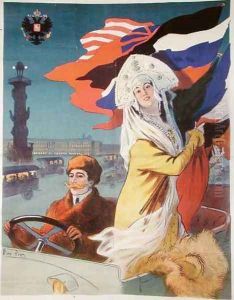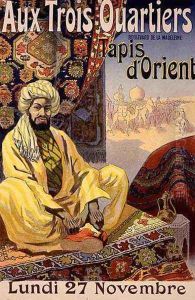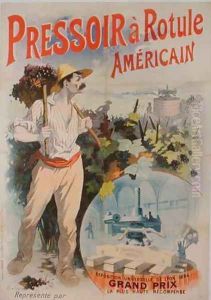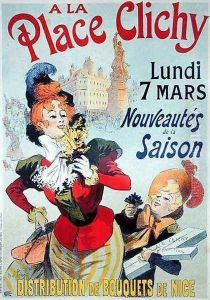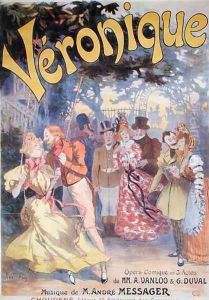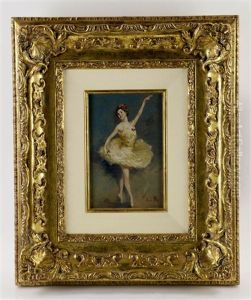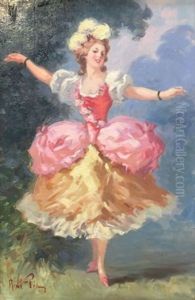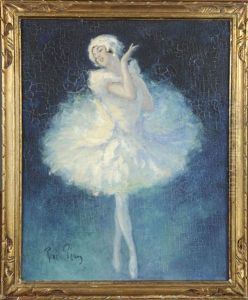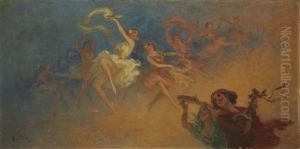Rene Pean Paintings
René Péan was a French graphic artist and illustrator born in 1875. While the exact date of his death is not well-documented in public records, his contributions to the art world during his lifetime are noteworthy, especially in the realm of poster art and illustration.
Péan was active during a vibrant time in the history of French art, which saw the emergence of the Belle Époque, a period characterized by optimism, regional peace, economic prosperity, and a flourishing of the arts. He was part of the lithographic revolution of the late 19th century, which had a profound impact on the production and dissemination of art. Lithography allowed artists to reproduce their work in large quantities, making art more accessible to the masses and contributing to the popularization of the poster as an art form.
René Péan's work is often associated with the Art Nouveau movement, which was at its peak from the 1890s to the early 1900s. Art Nouveau was known for its intricate linear designs and flowing curves, often inspired by natural forms. Péan's posters and illustrations often featured these elements, along with a vibrant use of color and a dynamic sense of movement, which made them stand out.
He created posters for various products, events, and companies, including advertisements for bicycles, automobiles, and pharmaceuticals. One of his most recognized works is the poster for the 'Phoscao,' a cocoa-based product, which showcased his skill in creating engaging and persuasive commercial art. Péan was also involved in designing graphics for theater and music hall productions, which were popular forms of entertainment during his time.
Unfortunately, like many artists of the era, René Péan's life details are not extensively documented, and much of what we know about him comes from his surviving works and their impact on the art world. His artwork remains a testament to the rich artistic culture of the Belle Époque and the enduring appeal of the Art Nouveau style. The lack of information on his death suggests that he may not have achieved significant fame during his lifetime, as is the case with many artists whose work gains greater recognition posthumously. Regardless, his contributions to the field of graphic arts and illustration continue to be appreciated by art historians and collectors alike.
